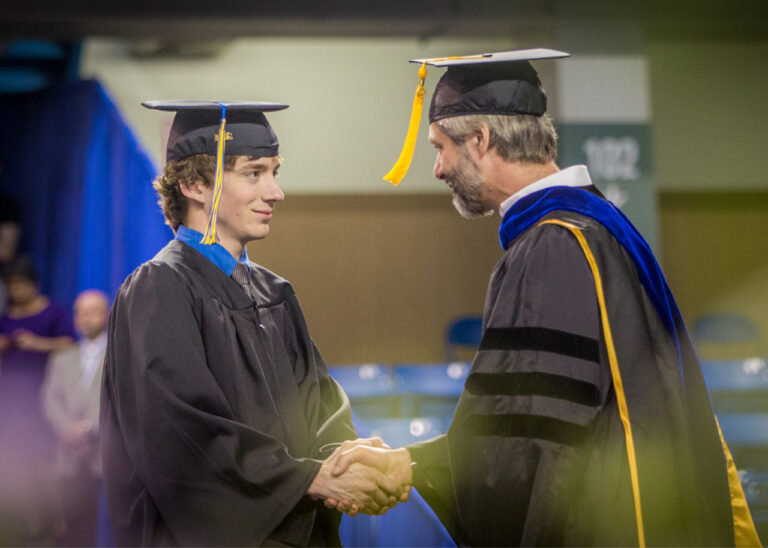How to blend the world into your classroom
Seven am, in late November 2014, I’m standing at a tall window on the 8th floor of Gruening. The sun’s not up yet and the snowy quad is moon-colored under the tall, campus lights. I wonder what I’ll say to my students this afternoon.
On the radio, there are reports of violence in Ferguson following the grand jury decision in the Michael Brown case. This builds on months of national attention to the relationships between police, violence, and race. Planning a discussion on the previous night’s reading escaped me. When the world feels too big to shut out of your classroom, do you close the door or invite what’s on everyone’s minds into your classroom?
Why open the door?
Classrooms are practice spaces. Students are practicing to become scientists, engineers, teachers, writers, counselors, and police officers. You can help them prepare to respond to current events both from their disciplinary position and as private citizens practiced at participating in discussions focused on respect and learning. Give students and yourself the opportunity to engage deeply in the issues using a classroom precedent for listening and negotiating in discussion. Your classroom may be one of the spaces with more different kinds of people that students are a part of and for that reason, a discussion here may be one that they can’t have elsewhere.
Finally, bringing the world into the classroom is engaging for students. To walk in one afternoon, scrap all your plans, and say, “There’s something more important today that will grab students’ attention. To help them see how what they do in the classroom connects to what happens outside brings a different motivator than grades to the work they do as students.
How to Open the Door
Here are some methods you might use to initiate conversation in your course
Discuss (in class or on a class discussion board):
- Ask: What has surprised you about ______? How does _________ matter to the ongoing discussion of our course and discipline? Are we hearing/reading different/conflicting things? What is/are at the center of this conflict?
- Share what you are thinking. What about the world around you has been on your mind? Why? What’s your connection to what’s going on? Where do you see an opportunity to learn?
Collaborate (in class or asynchronously online or as homework):
- Ask students what they’re reading, watching, and listening to. Use a social bookmarking tool like Diigo or Google Keep to gather resources online.
- Students identify themes and analyze the rhetoric
- Students look for connections to your area of study in the ongoing conversation online. Ex: How do policymakers impact civil engineering?
- Use a social annotating tool like hypothesis to do a collaborative close reading of an article or other online resource.
- Discuss how to distinguish between reliable and unreliable sources
Create:
- Students identify and investigate an aspect of the public discussion that is of interest to them. They find reliable resources, acknowledge limits to their arguments, and engage all sides. If appropriate to your course focus and outcomes, writing or reporting on this could prepare students for a class debate.
- Give students the opportunity to get credit for their engagement in the world. Students can write letters to policymakers or newspapers to advocate, especially advocacy related to your discipline and their academic pursuits.
- Students can look for data, either on the topic itself or on the reporting of the topic, and use a program like Piktocharts to create an infographic.
Challenges
You may be thinking: But I’m no expert on electoral politics, race relations in America, hunger, or any other newsy topic. This may be true. But you do not need to be an expert to create space for the negotiation of these ideas. In fact, it is best if you admit up front that you are not an expert and hope to learn with and from your students.
Whether online or face-to-face, be watchful for comments/behaviors that may be shutting some students out. If anything offensive is said, address it. Remind students of guidelines for respect and open-mindedness that you follow in your classroom.
Any approach you take here is a risky one. You cannot know where current events are going to go, nor what your students will bring to them. You may have to change your plan, adjust many times, and have conversations you couldn’t have anticipated. Don’t do it alone. Ask colleagues for support. This is water cooler conversation, but it’s also Twitter conversation. Ask your community–physically and on social media–for help.
References
Gonchar, M. 2014. 50 Ways to Teach with Current Events. October 7, 2014. The Learning Network.
Grise-Owens, E., Cambron, S., & Valade, R. (2010). Using current events to enhance learning: A social work curricular case example curricular case example. Journal of Social Work Education, 46(1), 133-146.

Kendell Newman Sadiik
Associate Director of Transformative Teaching
Instructional Designer
LION Liaison



Thank you, Kendell, for this prompting. In my classrooms I sometimes “open the door” to make more porous the boundary between inside and outside worlds. Done well, this exercise can make one’s class feel more relevant for students, who clamor to find ways to embed what they are learning in a worldly idiom.
That said, I should say that I also find that leaving the door too open can sometimes be problematic for students. The classroom can, and should, be a space for rigorous, open reflection on the important events of the day; but it should also be a haven away from the unbearable too muchness of the world. I try to seesaw between the olympian heights of abstraction and the material groundedness of what’s happening in the news. Retreating from the latter can help students to retrieve themselves from emotional investments and attachments which, when focused on too greatly, can become overwhelming, and hence distracting for learning.
I love what you have suggested here — to discuss, collaborate, and create. To this list of initiatives I might also add, as an addendum, an exercise in *ventriloquizing*. By this I mean that it can be a useful exercise to try to have students articulate perspectives that are not their own. This can have the effect of facilitating empathy, and expanding the possible for students more generally, in ways that enrich thinking and deepen critical judgment. I encourage such ventriloquizing by establishing very early in a discussion the idea that we ought to feel free to play devil’s advocate with another, but also by modeling this willingness to venture beyond the comfort zone of one’s own narrow perspective.
[…] Tip: How to blend the world into your classroom, https://ctl.uaf.edu/how-to-blend-the-world-into-your-classroom/ Teaching in the political now, […]